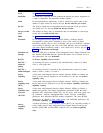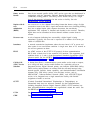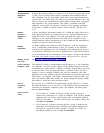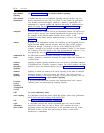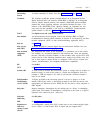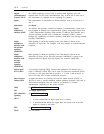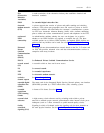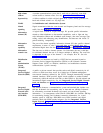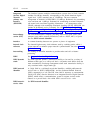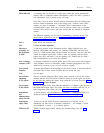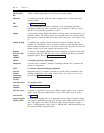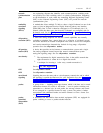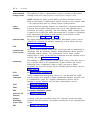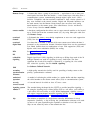
GLOSSARY
GL-11
high-volume
tandem
hyperactivity
INADS
inband
signaling
information
element (IE)
information
transfer
capability
information
transfer rate
Initialization
and
Administration
System
(INADS)
Integrated
Services Digital
Network (ISDN)
Integrated
Services Digital
Network basic
rate interface
(ISDN-BRI)
A tandem communications system that is used only to selectively route high-
volume traffic to alternate routes. See also Automatic Route Selection.
A failure condition in which a digital signal level 1 (DS1) facility generates on-
hook and off-hook stimuli at a very high rate.
See Initialization and Administration System.
Signals transmitted within the same channel and frequency band used for message
traffic. See also robbed-bit signaling.
A logical block of data in a Q.931 message. IEs provide specific information
related to either telephone or data-terminal capabilities, such as light and ring
code information; button and switchhook state changes; data rates; message type;
calling, called, and redirecting party identification; and data-rate and circuit- or
packet-switching compatibility.
The part of the bearer capability information element (IE) that specifics channel
requirements in terms of voice, voice-grade data, restricted digital data, and
unrestricted digital data. See also restricted channel and unrestricted channel.
The data rate at which a channel operates. For B-channels the rate is 64K-bps;
for wideband channels the rate is an integer multiple of 64K-bps. The exact rate
is dependent on the type of the channel — for example, H
0
or H
11
. See also
wideband channel.
A software and hardware tool used by AT&T Services personnel located at
Customer Service Support Organizations (CSSOs) or the National Customer
Support Center (NCSC) to initialize, administer, and troubleshoot customer
communications systems remotely.
A public or private network that provides end-to-end digital connectivity for all
services to which users have access by a limited set of standard multipurpose
user-network interfaces defined by the CCITT. Through internationally accepted
standard interfaces, ISDN provides digital circuit-switched or packet-switched
connectivity within the network and links to other ISDNs to provide national and
international digital connectivity. See also Integrated Services Digital Network
basic rate interface and Integrated Services Digital Network primary rate
interface.
The interface between a communications system and terminal that includes two
64K-bps B-channels for transmitting voice or data and one 16K-bps D-channel
for transmitting associated B-channel call-control and out-of-band signaling
information — an arrangement called 2B+1D. ISDN-BRI also includes 48K-bps
for transmitting framing and D-channel contention information, for a total
interface speed of 192K-bps. ISDN-BRI serves ISDN terminals and digital
terminals fitted with ISDN terminal adapters. See also Integrated Services
Digital Network, Integrated Services Digital Network primary rate interface,
and out-of-band signaling.



